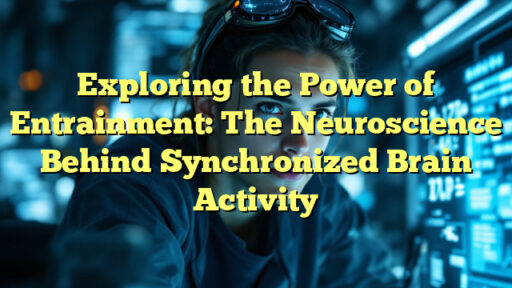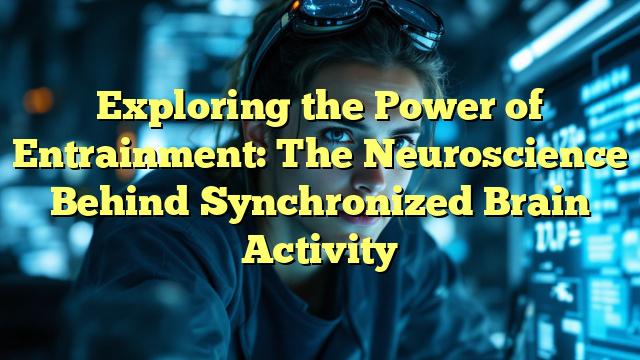Entrainment is a fascinating phenomenon that occurs when two or more rhythmic systems synchronize with each other. This can happen at various levels, from the movements of pendulum clocks to the beating of our hearts. In the world of neuroscience, entrainment refers to the synchronization of brain activity between individuals or within an individual's brain.
Research in neuroscience has shown that our brains are naturally inclined to synchronize with external stimuli, such as music, rhythm, and even the movements of others. This synchronization, known as neural entrainment, plays a crucial role in various cognitive processes, from perception and attention to memory and social interaction.
The Science Behind Entrainment
Neural entrainment occurs when neurons in the brain fire in harmony with an external rhythm. This synchronization can happen at different frequencies, ranging from slow oscillations (e.g., delta and theta waves) to fast oscillations (e.g., alpha and beta waves).
One of the most well-known examples of neural entrainment is the phenomenon of the brainwave entrainment, where auditory or visual stimuli are used to synchronize brainwave patterns. This technique has been studied extensively for its potential therapeutic benefits, such as reducing anxiety, improving focus, and enhancing creativity.
Recent research has also shown that neural entrainment plays a crucial role in social interactions. When we engage with others, our brain activity tends to synchronize with theirs, creating a sense of connection and empathy. This phenomenon is known as interpersonal neural entrainment and is believed to be the basis of social bonding and communication.
The Power of Entrainment
The power of entrainment lies in its ability to shape our perception, cognition, and behavior. By synchronizing brain activity with external stimuli, we can enhance our abilities in various domains, such as learning, creativity, and emotional regulation.
For example, studies have shown that listening to rhythmic music can improve concentration and memory retention. This is because the rhythmic patterns in music can entrain our brainwaves, helping us to stay focused and engaged in cognitive tasks.
Entrainment has also been used in therapeutic settings to treat various neurological and psychiatric conditions, such as Parkinson's disease, depression, and PTSD. By entraining brain activity with external stimuli, clinicians can help patients regulate their emotions, reduce anxiety, and improve motor control.
Conclusion
In conclusion, entrainment is a powerful mechanism that influences how our brains function and interact with the world around us. From neural entrainment to interpersonal synchrony, synchronized brain activity plays a crucial role in shaping our perception, cognition, and social behavior.
By understanding the neuroscience behind entrainment, we can harness its power to enhance our cognitive abilities, improve mental health, and strengthen social connections. As researchers continue to explore the mechanisms of entrainment, we can expect to discover new ways to leverage this phenomenon for personal growth and well-being.
FAQs
What is neural entrainment?
Neural entrainment is the synchronization of brain activity with external stimuli, such as music, rhythm, or the movements of others. This phenomenon plays a crucial role in perception, attention, memory, and social interaction.
How can entrainment be used therapeutically?
Entrainment has been used in therapeutic settings to treat various neurological and psychiatric conditions, such as Parkinson's disease, depression, and PTSD. By entraining brain activity with external stimuli, clinicians can help patients regulate their emotions, reduce anxiety, and improve motor control.
Can entrainment improve cognitive performance?
Yes, entrainment can improve cognitive performance by synchronizing brain activity with external stimuli, such as rhythmic music. This synchronization can help enhance concentration, memory retention, and creativity.
Unlock Your Mental Potential




